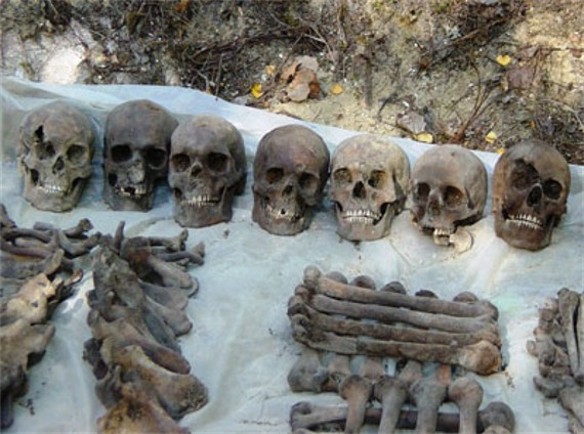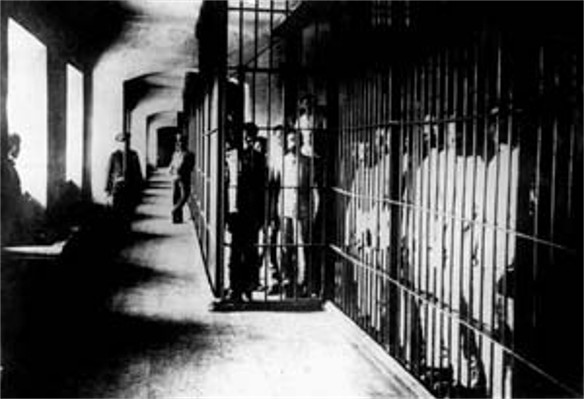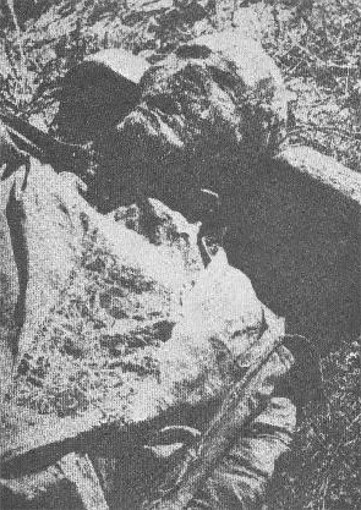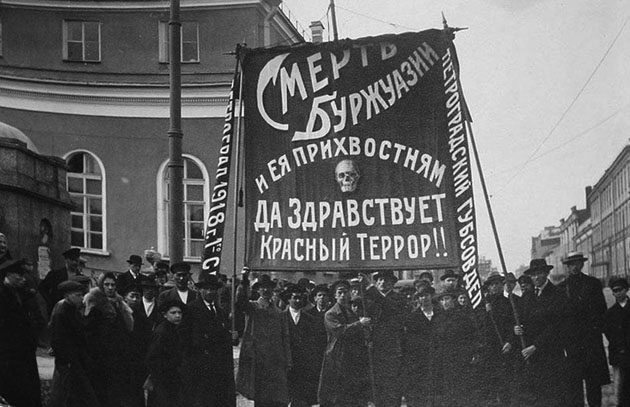Terror
Terror. An instrument of political rule that consists in inducing fear and helplessness in subjects of the state through arbitrary violence. In the 20th century, state terror has played a key role in thwarting Ukraine's aspirations to independence and subjugating the Ukrainian people to Russian domination under the Soviet regime. This fact accounts for the caution and ethnic tolerance with which Ukrainians approached national independence during the disintegration of the Communist regime in the late 1980s and early 1990s.
Nowhere have the techniques of terror been developed to a higher degree and applied on a wider scale than in the USSR. The repertoire consisted of secrecy, ruthless violence, unpredictable targeting, and irrational destructiveness. It was implemented by a vast network of secret agents and informers, which seemed to be omnipresent, omniscient, and omnipotent. No person could be certain that even his or her most intimate thoughts expressed to closest friends or relatives were not monitored and analyzed for political loyalty by the police. Arrests were carried out, usually in the dead of night, without forewarning or explanation. People simply disappeared from their homes, and their families were not informed where and how long they would be held. No one could know who would be arrested next. Even whole villages or categories of the population were uprooted and deported to distant, unannounced regions (see Resettlement). Besides beatings, week-long deprivation of sleep, and other forms of physical torture, threats, blackmail, and promises were used to extract false confessions of treason and to implicate others. Elaborate show trials of noted political leaders deflected attention from the real causes of society's failures and sowed universal suspicion and fear. Most of the detainees were condemned without trial to be shot or to die slowly in remote labor camps. Very few inmates survived and returned home. Those who did were forced to remain silent about their imprisonment. Compulsory participation in elections and mass demonstrations of support gave the government an aura of invincibility and implicated everybody in its crimes. The end result was the disintegration of civil society: universal mistrust, corruption, guilt, and dehumanization.
Beginning with Vladimir Lenin's Red Terror, terror was a permanent instrument of the Soviet state, but its intensity and scale varied. In the decade 1929–39 Ukraine was subjected to three particularly horrendous waves of terror: the collectivization and dekulakization campaign (1929–32), the Famine-Genocide of 1932–3, and the Great Terror of 1936–8. The collectivization drive, with the deportation of over a million of the most productive ‘kulak’ peasants, and the state-made famine, with the loss of 6 to 10 million lives, destroyed the Ukrainian peasantry as the base of aspirations to national independence and resistance to the central government. The recurrent purges of the Communist Party of Ukraine (CPU) and Ukrainian government cadres as well as of Ukraine's intellectual and cultural elite (see Intelligentsia) left the nation leaderless and totally under Moscow's control (see Yezhov terror).
In Western Ukraine, which was annexed by Joseph Stalin in 1939 as a result of the Molotov-Ribbentrop Pact, Soviet rule was introduced deliberately by means of terror. A manipulated election gave overwhelming support to the region's incorporation into Soviet Ukraine. Hundreds of thousands of Ukrainians and Poles were deported from the territory to Siberia. When the Germans launched their offensive against the USSR in mid-1941, thousands of political prisoners in Western Ukraine were force-marched eastward or slaughtered in their jail cells.
The survivors of Nazi rule in Soviet territories that had been captured by the Germans were suspected of wholesale collaboration with the enemy. In the 1940s eight national minorities, including the Crimean Tatars, were deported en masse, with heavy losses, from their traditional homelands. According to Nikita Khrushchev, had there been enough railway cars, Stalin would have deported the Ukrainian people too. Ruthless terror was used against the Ukrainian population in Western Ukraine to overcome the resistance put up by the Ukrainian Insurgent Army.
After Stalin's death Khrushchev partially renounced terror as an instrument of rule. Although Soviet leaders tried to distance themselves from the Stalinist heritage of terror, the basic doubt about the legitimacy of Communist rule that was raised by the use of terror in the past was not resolved. The Party's attempt to place all blame on Stalin, and its ‘rehabilitation’ of victims of the terror, were grossly inadequate responses to the problem.
[This article originally appeared in the Encyclopedia of Ukraine, vol. 5 (1993).]



